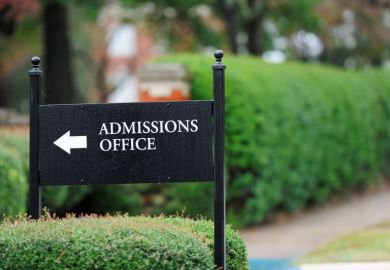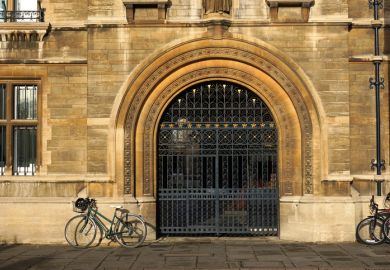Fewer students have been accepted into their preferred university after the UK’s return to end-of-school examinations following two years of teacher-assessed grades.
This year’s Ucas data show that 374,580 applicants have been accepted on to their firm choice, more than 20,000 fewer than the 395,770 last year.
This was driven by a sharp drop in the number of students accepted by the most selective universities, after steep rises since 2019. These “higher tariff” institutions confirmed 151,760 places on the morning of results day, down from 163,100 last year, although they retained the largest share of admissions overall.
Entry to medium- and lower-tariff universities remained relatively static, with both increasing by around 1,000, to 138,040 and 136,040 respectively.
Overall, the total number of students being placed on A-level results day is the second highest on record, with 425,830 confirmed.
This figure is 16,870 more than in 2019, when examinations were last held, but 2 per cent lower than 2021, which saw the highest ever number of students accepted on to courses.
The drop in the success rate for firm places is partly down to a decrease in those achieving the top grades under the regulator Ofqual’s plans to reverse grade inflation towards 2019 levels.
A total of 36.4 per cent of students achieved A* or A grades, down from 44.8 per cent in 2021 but still higher than in 2019, when the figure was 25.5 per cent.
It means that clearing is likely to be busier this year than it was on the two results days during the pandemic. A total of 20,360 applicants have found out they do not currently have a place to study for the coming academic year, according to the Ucas data.
Universities have been more cautious in their offer-making over the admissions cycle after larger-than-expected intakes in 2020 and 2021. The changes in grade boundaries had also led to predictions that more students would miss their predicted grades.
Meanwhile, there have been fears that the continuing freeze in tuition fees in England is leading universities to readjust their undergraduate cohorts towards international students, who pay higher fees.
The Ucas data show that international students account for 12.3 per cent of total full-time placed undergraduates, down from a high of 14.7 per cent in 2019.
The ratio between the entry rate for the most and the least disadvantaged students has narrowed slightly, from 2.34 in 2021 to 2.29 this year, with 46,850 students from the most disadvantaged backgrounds being accepted.
Most subject groups saw a drop in the number of students compared with 2021, reflecting the decrease in the total number of accepted places. On medicine and dentistry courses, 10,370 students have places, down from 11,810 last year but slightly up on the 10,170 in 2020.
Intakes for mathematical sciences, engineering and technology, social sciences and law were all marginally lower than in 2021 but more students are taking up places in creative and performing arts, education and teaching, and computing.
Ucas’ chief executive, Clare Marchant, said that despite “much discussion” about what the return to exams would mean for progression into higher education, more students have progressed than the last time a cohort sat exams.
She said the growth in the number of 18-year-olds in the population this year would continue for the rest of the decade, creating “a more competitive environment for students in the years to come”.
Tim Bradshaw, chief executive of the Russell Group of research-intensive universities, said it was “a competitive year for admissions as things begin to return to normal after disruptions to exams during the pandemic”.
“Over the next few weeks our admissions teams will be working hard to place as many young people at our universities as possible…As is the case every year, some courses will be more competitive than others, particularly those where numbers are capped by government, like medicine and dentistry.
“We would encourage students who miss out on their grades not to panic. In the first instance they should contact the universities where they had offers as there may be some flexibility or other options – such as similar courses – they might want to consider.
“There are also lots of options available to those who decide to go through clearing, including at a number of Russell Group universities.”
Chris Hale, Universities UK’s interim chief executive, said that the results were “confirming the strong appeal of our universities”.
“Students applying this year have faced multiple years of disrupted education, and they and their families should be exceptionally proud of their achievements,” he said.
Register to continue
Why register?
- Registration is free and only takes a moment
- Once registered, you can read 3 articles a month
- Sign up for our newsletter
Subscribe
Or subscribe for unlimited access to:
- Unlimited access to news, views, insights & reviews
- Digital editions
- Digital access to THE’s university and college rankings analysis
Already registered or a current subscriber? Login








